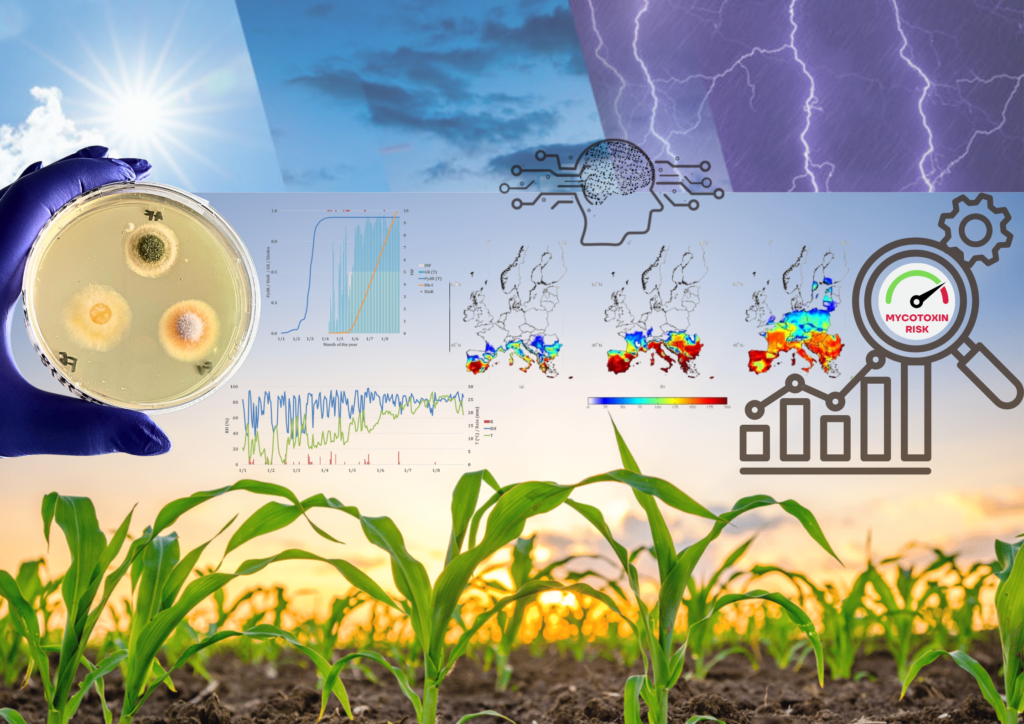Mycotoxins, secondary fungal metabolites produced by toxigenic fungi represent a significant risk to food safety, human health and agricultural economies worldwide. Despite extensive research, the ability to accurately predict mycotoxin contamination remains challenging, mainly because of the complex interactions between environmental factors, host crop and fungal species. This challenge is becoming even more complicated due to the impact of climate change that is significantly changing plant-fungi and fungi-fungi interactions. Addressing this gap, the PhD project at UCSC (Italy) focuses on acquiring data on the cited interactions and applying machine learning to improve predictive models of mycotoxin occurrence. The research involves integration of various datasets with machine learning algorithms to develop an accurate predictive model which will be suitable for use with different crop value chains. These data sources will include environmental factors, such as climate patterns, soil conditions and agricultural practices, as well as genotypic and phenotypic data from both crop plants and toxigenic fungal species. Additionally, the project will investigate the co-occurrence interactions of selected Aspergillus and Fusarium fungal species and validate the model on both lab and field conditions. The expected outcome is the creation of a robust, data-driven tool for mycotoxin risk management which will provide more reliable predictions of mycotoxin contamination and enhance our understanding of the factors driving mycotoxin contamination. This research supports the European Commission’s goals of improving food safety standards and contributes to the development of effective strategies for mitigating climate change related risks across the agri-food sector and public health.

